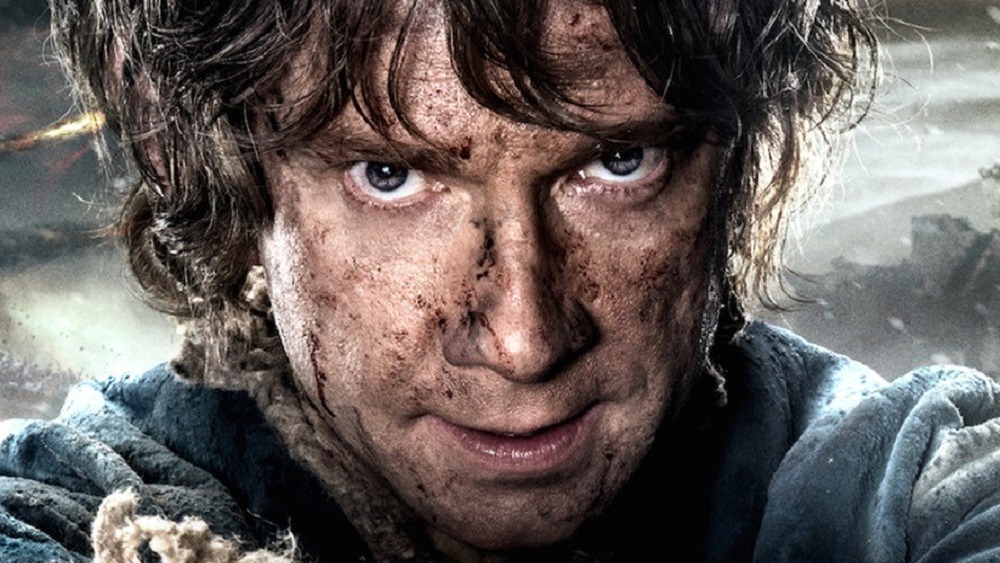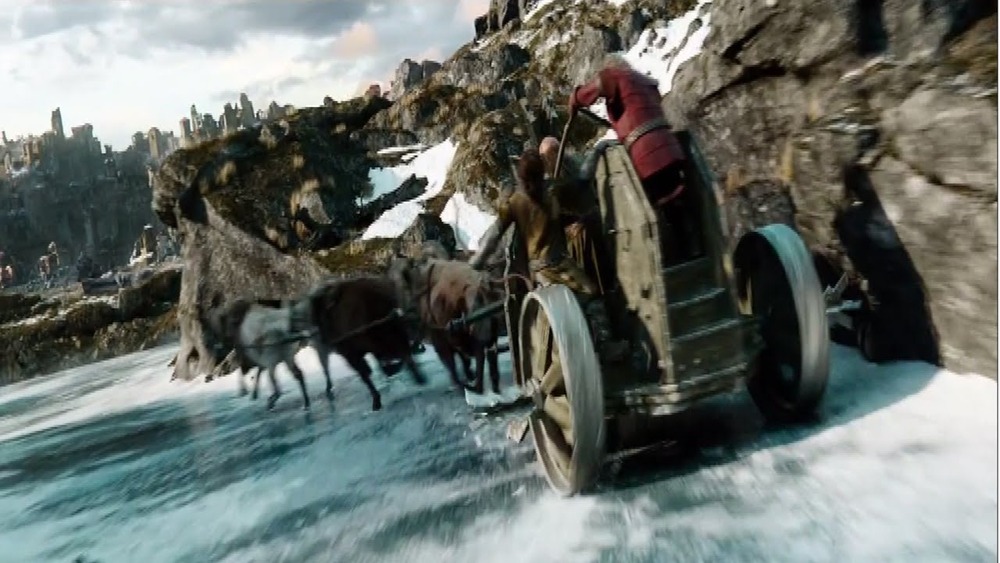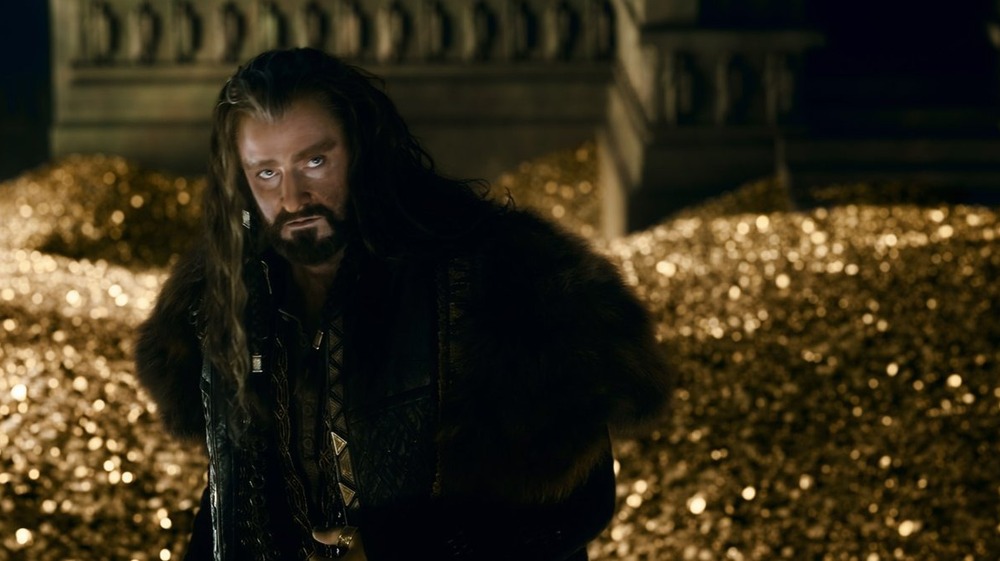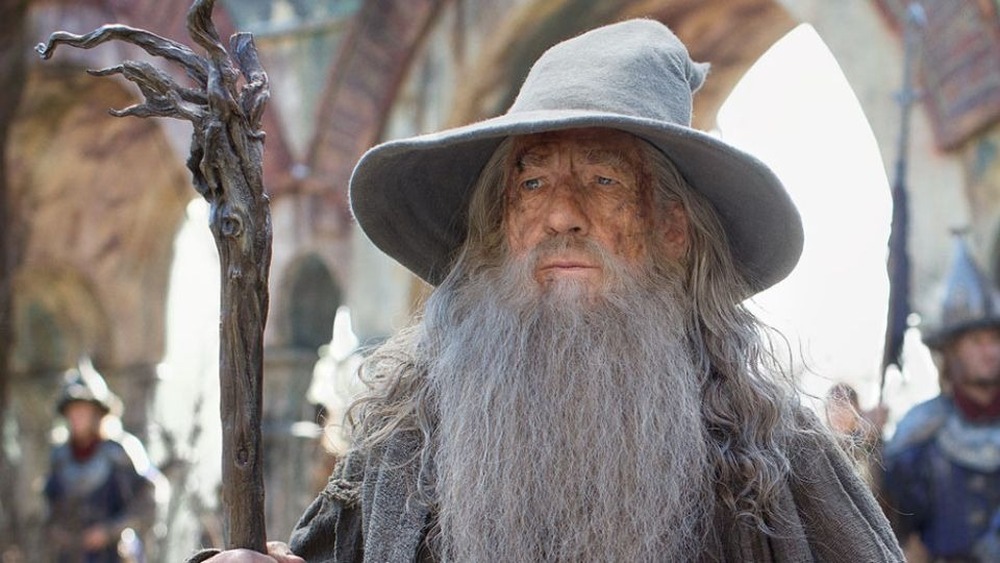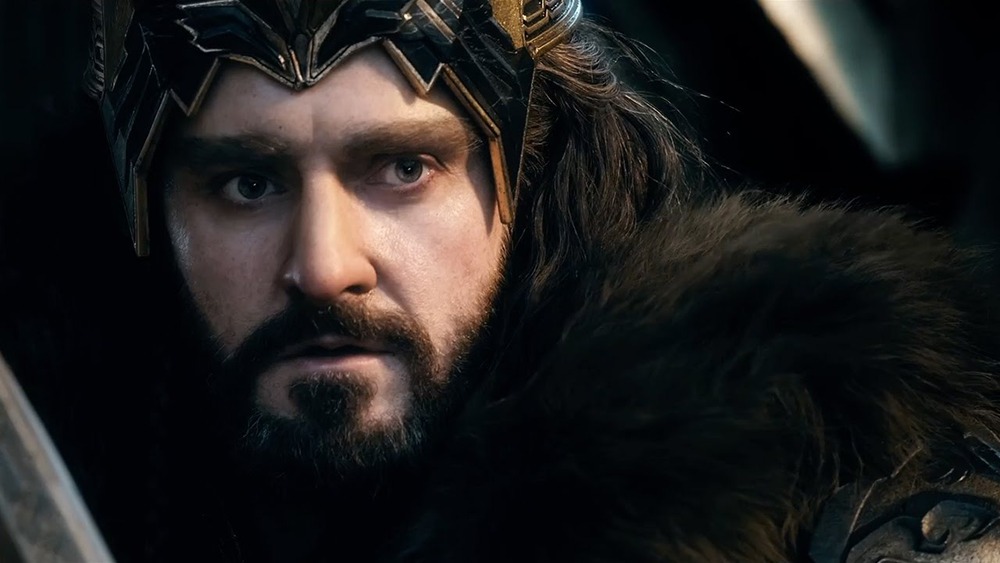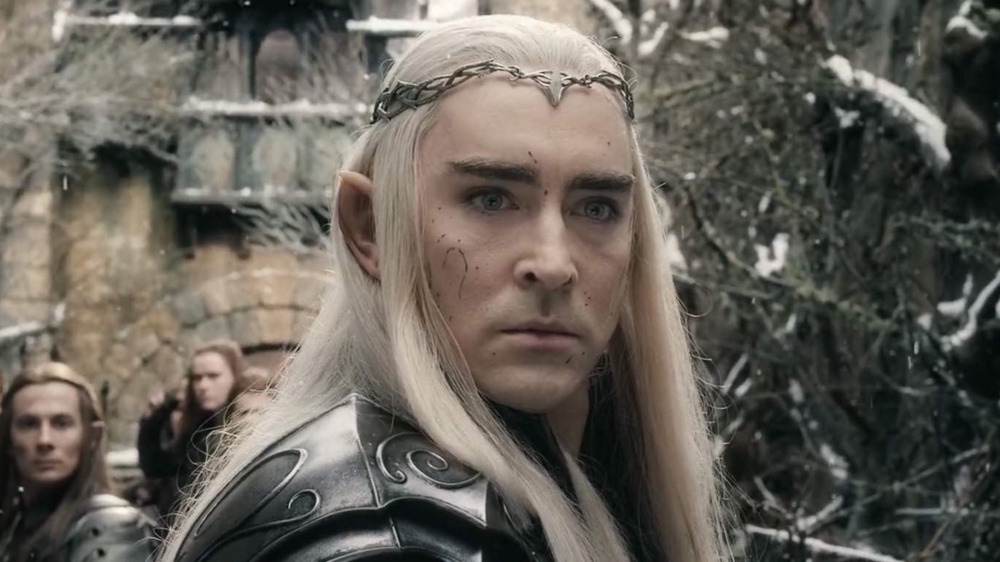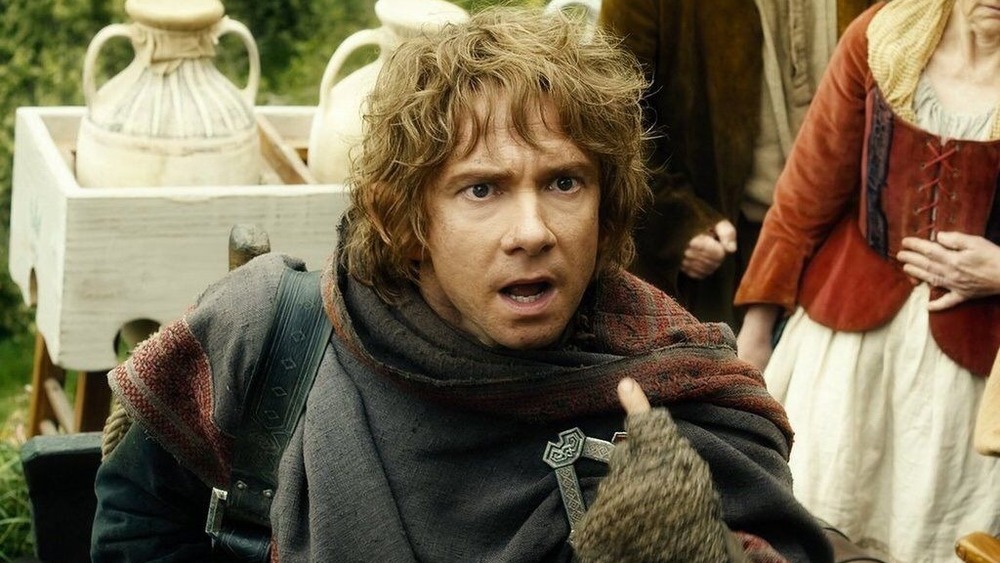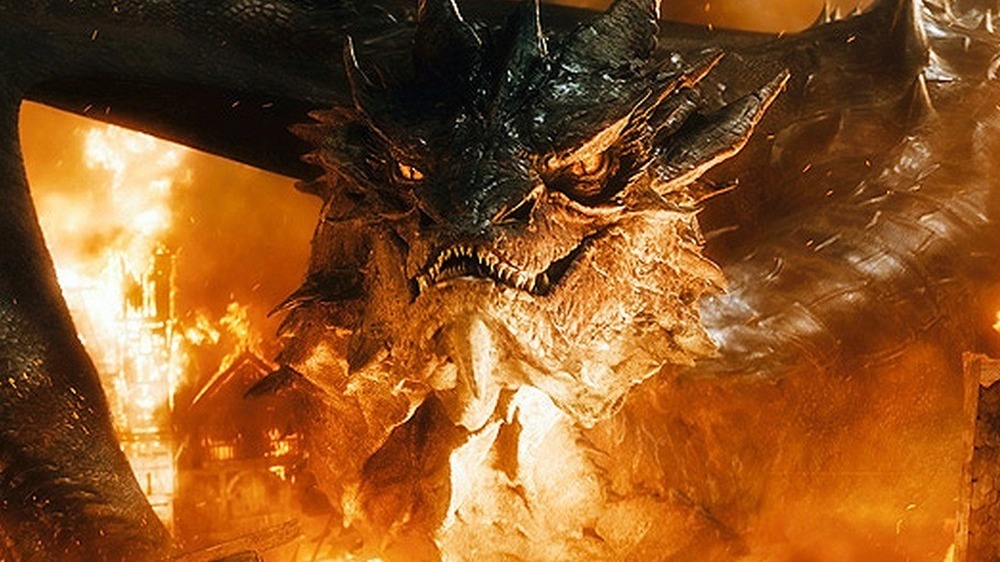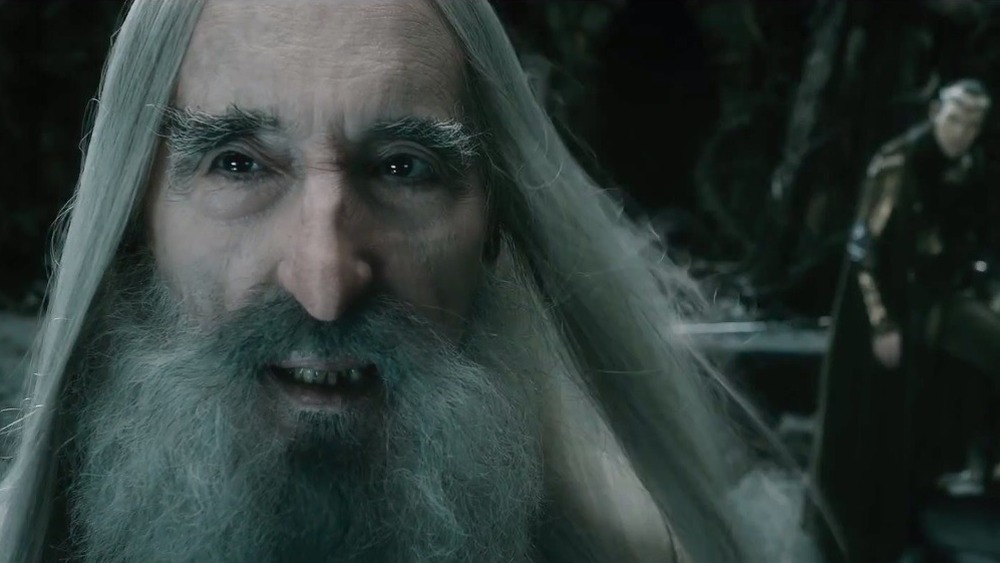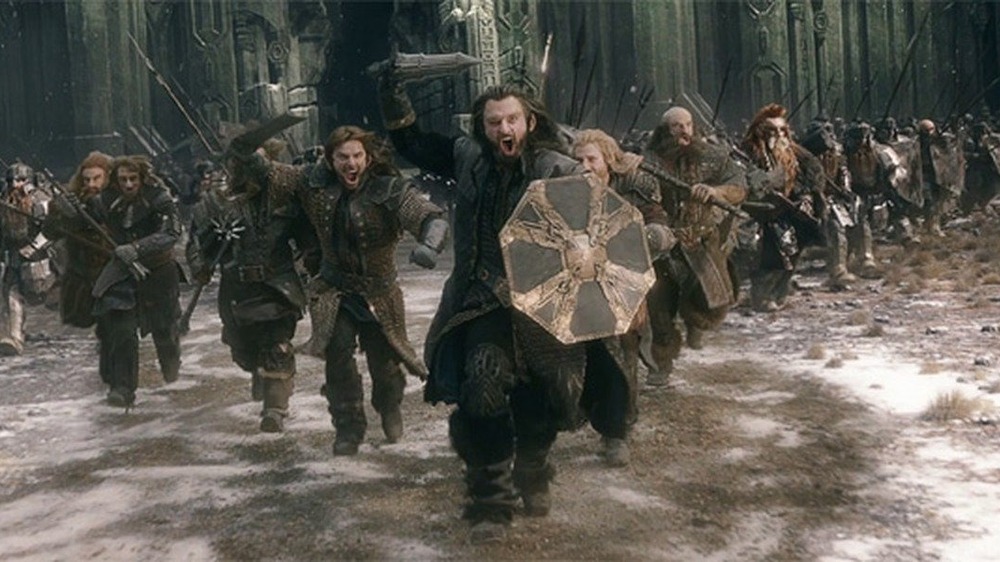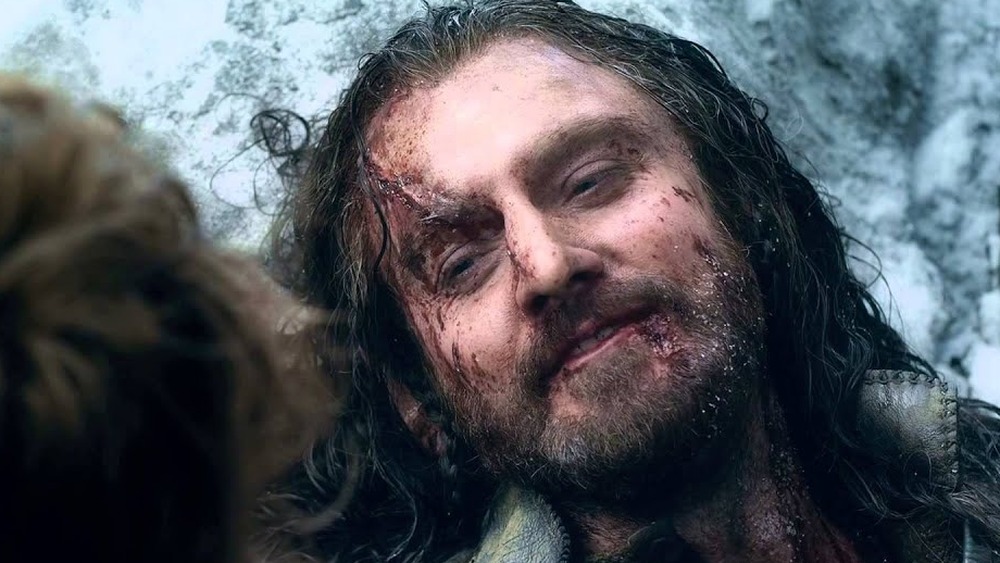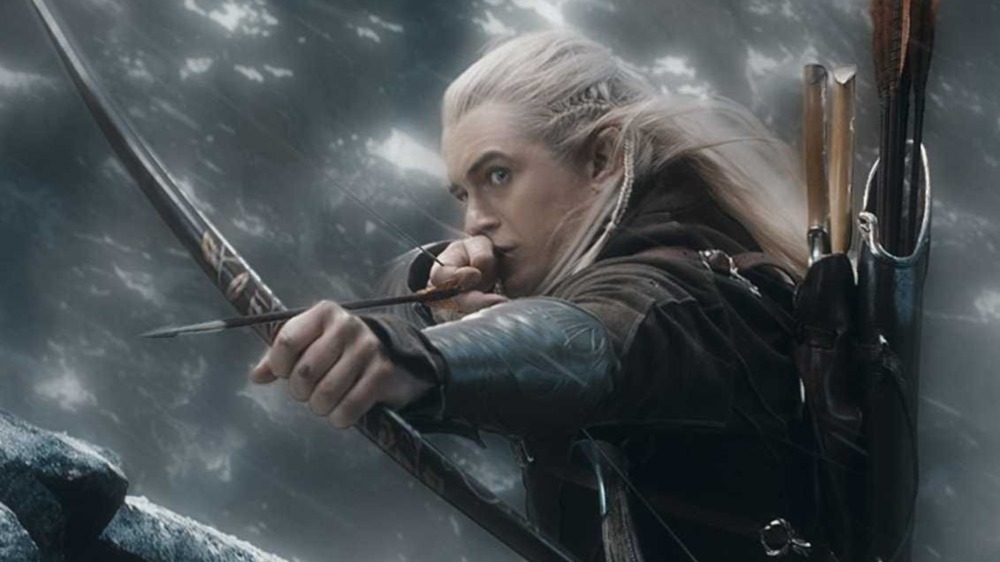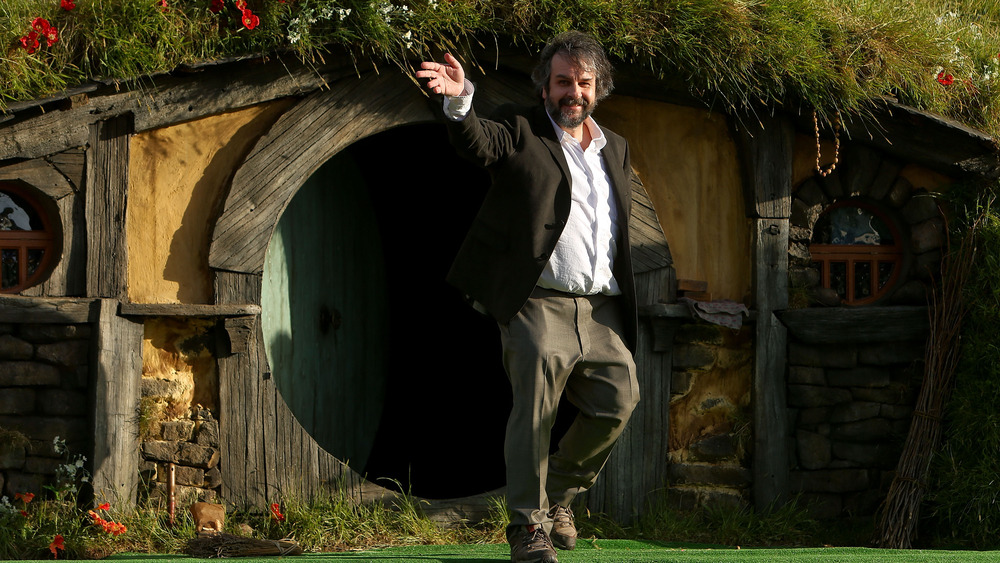What The Final Days On The Set Of The Hobbit: The Battle Of The Five Armies Were Like
The wrap on The Hobbit: The Battle of the Five Armies was a long time coming, but its journey to the screen was a strange one. Much of the material had already been shot during the production of the first two Hobbit movies, as director Peter Jackson originally intended to make just two films. But when he realized that wouldn't do the story justice, he extended the project into a trilogy.
The addition of a third film also prompted a name change, from the original There and Back Again to The Battle of the Five Armies. When he saw a very early cut of the final movie, Jackson just knew this was what it had to be called. Not only did it better capture the scope of the third film, but There and Back Again was really only proper to describe the conclusion of a two-part series (the "there" and the "back again").
The title also works because the bulk of the running time is taken up by the battle itself, which is told from so many different perspectives. The battle, Jackson said, "carries the storyline" to the point that he doesn't even think of it as a battle. Usually, these large-scale cinematic combat scenes are self-contained, but in this film, the story evolves as a result of the showdown, making it something much more. It's the crux of the storytelling ... but what was it like to be there in those final days? Here's what the final days on the set of The Hobbit: The Battle of the Five Armies were like
Some awesome stuff was cut from Battle of the Five Armies
The film may have been the epic conclusion to the Hobbit trilogy, but it ended up being the shortest of all the Jackson-directed Lord of the Rings epics. You might chalk that up to the film being technically unplanned, but it's more than just glorified bonus footage. Jackson, in fact, has said that he always knew deep down that there would be six films.
Though this third installment was fleshed out with some non-canonical characters and padding of the original narrative, Jackson explained that it did draw from Tolkien's appendices. According to Richard Armitage, however, some of his favorite scenes were left on the cutting room floor. (Just imagine how much we would've missed if Jackson had left it at two films!)
These included a chariot chase scene, a funeral scene, and Antony Sher's performances as Thrain, Thorin Oakenshield's father. All of these, Armitage knew, had been removed from the movie, but he was excited at the prospect of seeing them in action in the extended edition. He commented that even though there were people asking why the story had to be extended into three films, in reality, even three films "wasn't quite enough."
Dealing with dollar doubts
As they wrapped up, the cast and production teams were preparing for a less-than-stellar global box office performance as the dollar began to rise and foreign currencies began to plummet. The Battle of the Five Armies was expected, before it even hit the big screen, to gross $90 million less than it would have under other circumstances.
All told, the film didn't hit $1 billion because of this, but it still grossed an underrated and impressive $956 million in total — ranking as the second-highest-grossing film of 2014 after Transformers: Age of Extinction. The series earned almost $3 billion, all told, and certainly would've crossed this mark had the global currency situation been different. Still, the performance of the trilogy as a whole, while it didn't ultimately rise to that of its predecessor, is nothing to sneeze at, especially considering early critic and audience reservations around the series' 48 frames-per-second shooting rate and the decision to add a third film at all.
One important milestone to note is that The Battle of the Five Armies broke box office records in China, which can be taken to signal that the film succeeded in orchestrating a visual spectacle that was remarkable enough to transcend the language barrier.
Cast members kept as many Hobbit props as they could
It's not uncommon for cast members to request or even "steal" props that hold sentimental value after a large cinematic endeavor comes to a close. The compulsion to leave with as much memorabilia as possible was even stronger in the Hobbit's case, though, because the characters that some cast members had embodied over the course of decades were finally being put to rest.
Thranduil the Elvenking, played by Lee Pace, got to leave with his elven sword, which the actor called a "work of art" and a memento of an amazing experience. Martin Freeman held onto a couple of pairs of hobbit ears, a dressing gown, and Bilbo's famous sword, Sting. Similarly, Richard Armitage also kept one of his swords, which was a "beast" that now adorns a shelf in his living room.
But one of the most endearing souvenirs was kept by Sir Ian McKellen, the inimitable actor who portrays Gandalf. He's had Glamdring, Gandalf's sword, ever since The Lord of the Rings, and for The Hobbit, the production gave him the wizard's hat and staff. Though he doesn't know "what the hell he's supposed to do with the hat" except let people take pictures with it when they visit, he did offer his staff to his local pub, where it's currently a minor attraction hanging behind the bar.
Peter Jackson knew it was darker than the rest
We've seen it happen in many fantasy franchises — a series will start out light-hearted and grow darker with each installment. For proof, see Harry Potter, where the franchise begins all whimsical, but as it progresses, the drama, themes, and even the lighting get darker. And there was a similar shift in The Hobbit.
Even Peter Jackson admits the final Hobbit film was grimmer than the rest. As he explained (via Collider), "[The series] starts at a certain point of innocence and naivete, and things are starting to get darker and darker, and the screws are getting tighter." However, this is exactly what the director wanted, saying that Battle of the Five Armies has "a nice thriller pace to it" and describing it as "the most emotional and tense of the three." In fact, this emotional intensity is part of what made the film Jackson's favorite installment of the latter trilogy (even if critics didn't feel the same way).
The Hobbit set got some 'extra' visitors
During filming, Lee Pace's parents visited him on set, an in-person care package of sorts for one of the only Americans in the film. His father, James, is an engineer whose work took him across the world, from Saudi Arabia to Texas, and Lee has seemingly taken after him with an acting career that has spanned continents.
The engineer and his schoolteacher wife, Charlotte, got the chance to try their hands at acting when Peter Jackson offered them parts as extras (Lake Town villagers) during their visit. Even luckier than the typical extra, though, they got to share a shot with Gandalf himself, Pace told Empire.
However, you won't see this scene in the film itself or even the 30 extra minutes of the extended edition. Why? Because, apparently, Pace's parents were being a little too conspicuous, with his father especially acting like quite the ham. Still, James got the once-in-a-lifetime chance to don a blond wig next to Ian McKellen, and according to Pace, his mother even got a close-up. Even if it didn't make it into the final film, that's a pretty special memory.
Martin Freeman wanted to leave nothing undone
In the end, Martin Freeman wanted to be certain that he'd taken every opportunity to do something in a new and exciting way, even if it made him look foolish. We already know that many scenes were cut from this film, but that's not even considering the myriad Bilbo Bagginses that exist in unused takes. What do we mean? Well, Freeman made a point of switching it up every single time.
Freeman never wanted to look back and think, "I never tried that." He was as willing to give terrible performances as he was to give great ones because, oftentimes in the moment, you don't know in which category you'll land. The point was to always try something new so that the role got every chance to be fully expressed. As filming drew to a close, Freeman was eking out every last bit of Bilbo and leaving no stone unturned.
Ian McKellen independently echoed this statement in a separate interview, in which he said that Freeman was always doing something different with what he was given. It was never the same thing over and over, and this style of acting McKellen found especially appealing, even "startling" in its spontaneity. Keeping it fresh take after take is a really difficult thing to do, and it points to Freeman's immense skill as an actor.
Benedict Cumberbatch was drinking honey and ginger
As production drew to a close on the final installment of The Hobbit trilogy, Benedict Cumberbatch was busy with day-in, day-out preparation for the ADR (automatic dialogue replacement) for his roles as Smaug and the villainous Necromancer.
Impressively, during the motion capture and initial voice sessions, none of Cumberbatch's performance was modulated, and it all depended exclusively on his warm-ups, cool-downs, and lots of silent rest in between. In other words, it took a whole lot of time to get Cumberbatch's performance, but whatever stage he was in, the versatile actor always had a lot of honey and ginger ready to help with his voice.
And while there wasn't as much technical tweaking as you might expect, the filmmakers did use some interesting approaches for dialogue on set, running it through speakers and pitch shifting to get a feel for the timbre of each character's voice and the lung capacity that would be required to capture it. Ever the over-achiever, when Cumberbatch did use technology, he did so to bring even more effort and personality to his roles. For the Necromancer's speech, Cumberbatch spoke backwards and then had it looped forward, in order to give it "that satanic oddity."
The Battle of the Five Armies was Sir Christopher Lee's last live-action performance
Christopher Lee was a horror icon and a prolific actor who found new fame by portraying Saruman the White. However, The Battle of the Five Armies would be the last film completed and released before he passed away after his 93rd birthday. Lee had been around so long that he'd actually met Tolkien! However, his age and health concerns meant that he filmed his scenes at England's Pinewood Studios because he was uncomfortable flying to New Zealand.
Christopher Lee's inclusion in the series carries a special sentimentality, as it represents the mending of his relationship with Peter Jackson and with the entire franchise. After playing a pivotal role in The Fellowship of the Ring and The Two Towers, Lee's sadistic Saruman was cut from The Return of the King, which prompted the spurned actor to boycott the premiere, jeopardizing his friendship with the director. Luckily, both the role and the friendship were salvaged in the second trilogy.
Peter Jackson had to halt production for a couple days
For some, it's unbelievable — and for more critical viewers, it's no surprise at all — to learn that for many of the scenes in The Hobbit trilogy, Peter Jackson didn't even have storyboards or completed scripts! He admitted that his process was more accurately described as "making it up as he went along," partly because he abruptly jumped in to take over after Guillermo del Toro left the project. This meant he had to start working without much room to prepare his vision ahead of time.
This is another reason that The Battle of the Five Armies is his favorite film in the franchise. He describes the later stages as a point where he was really "getting his mojo as a director" on the project. Still, "winging everything," no matter how skilled you are at it, can only take you so far. It worked for Jackson up until the final battle, when he went to the producers and the studio and asked for a delay, calling production to a halt.
Granted, the trilogy's chaos had afforded Jackson a lot of creativity, something Richard Armitage confirmed when he described how the director experimentally shot an abstract scene in which Thorin sees his face reflected in a gold pool as a dragon, accomplished by constructing a green-screened ramp on the spot. But the undertaking for the final battle was so complex that Jackson had to extensively plot it out ahead of time, putting in way more planning than he'd been doing up to that point.
Thorin reached the apex of his story in the final Hobbit film
For many characters, this film wasn't just about the battle but about genuine character development. And in many ways, The Battle of the Five Armies was Thorin Oakenshield's story, and it explored a depth of character that would've been lost had the third film never happened.
As he prepared to say goodbye to his character, actor Richard Armitage was also saying goodbye to the many friends he'd made during his time on the trilogy. He shot the final battle with Azog during the last couple weeks as everyone else began to wrap on their characters, one by one. This was a bittersweet time because, in the beginning, he'd been less sociable with the cast in order to really get into Thorin's character and save his energy to give everything to his scenes. Just when he was going out more and getting closer with the cast, everyone began to leave.
The last scene that Armitage filmed was the one with Azog in which he has the blade in Thorin's chest, and the dwarf has to decide to pull the blade out to kill his enemy, even though it means he himself will die. A close-up of his relief in letting go was the very last shot Armitage filmed for the franchise, and Jackson lingered on Thorin as he and his actor shared each of their "last moments."
The Hobbit ended in front of green screens
When it came to The Battle of the Five Armies, much of the footage had already been shot back when there were only two movies planned. As a result, there was less location shooting in the third installment. On top of that, there were more studio shots in general in this trilogy than in The Lord of the Rings because of just how far technology had come.
One element that relied a lot on virtual technology was capturing the scope of the final battle itself. It was so expansive that the filmmakers had to do it, according to senior special effects supervisor Joe Letteri, mostly on the performance capture stage. Jackson wanted to explore every inch of the battle, and he had the resources to do so.
A studio and green screen really can take you anywhere on Earth and beyond. But as much as the production made use of green screens for its intricate storytelling, Jackson made every attempt to create something real. In an interview with Xtreme, Sir Ian McKellen recalled showing up to set one day and discovering quite the surprise. "One day I walked in, and the entire studio was full of gold coins. It was actually all there, so there's a lot less green screen than you'd think."
'Once in a lifetime' had officially happened twice
Principal photography on The Hobbit wrapped after 266 days of shooting — the exact amount of time it took to film The Lord of the Rings trilogy. By the end of each, lifelong friendships (a "real fellowship") had been forged. These relationships came about largely due to the collaborative atmosphere Jackson fostered on set, as well as elements of shared experience and struggle, like the uncomfortable dwarf costumes that created camaraderie among those forced to wear them. (Richard Armitage commented that he felt "buried in prosthetics.")
After the first trilogy, Jackson had said "never again," but that ended up being false when he turned around and gave us The Hobbit on an essentially identical production schedule. He says he's now lived the once-in-a-lifetime experience twice, but he insists this really is the last time. Still, we can't help but notice that no one has adapted The Silmarillion yet...
